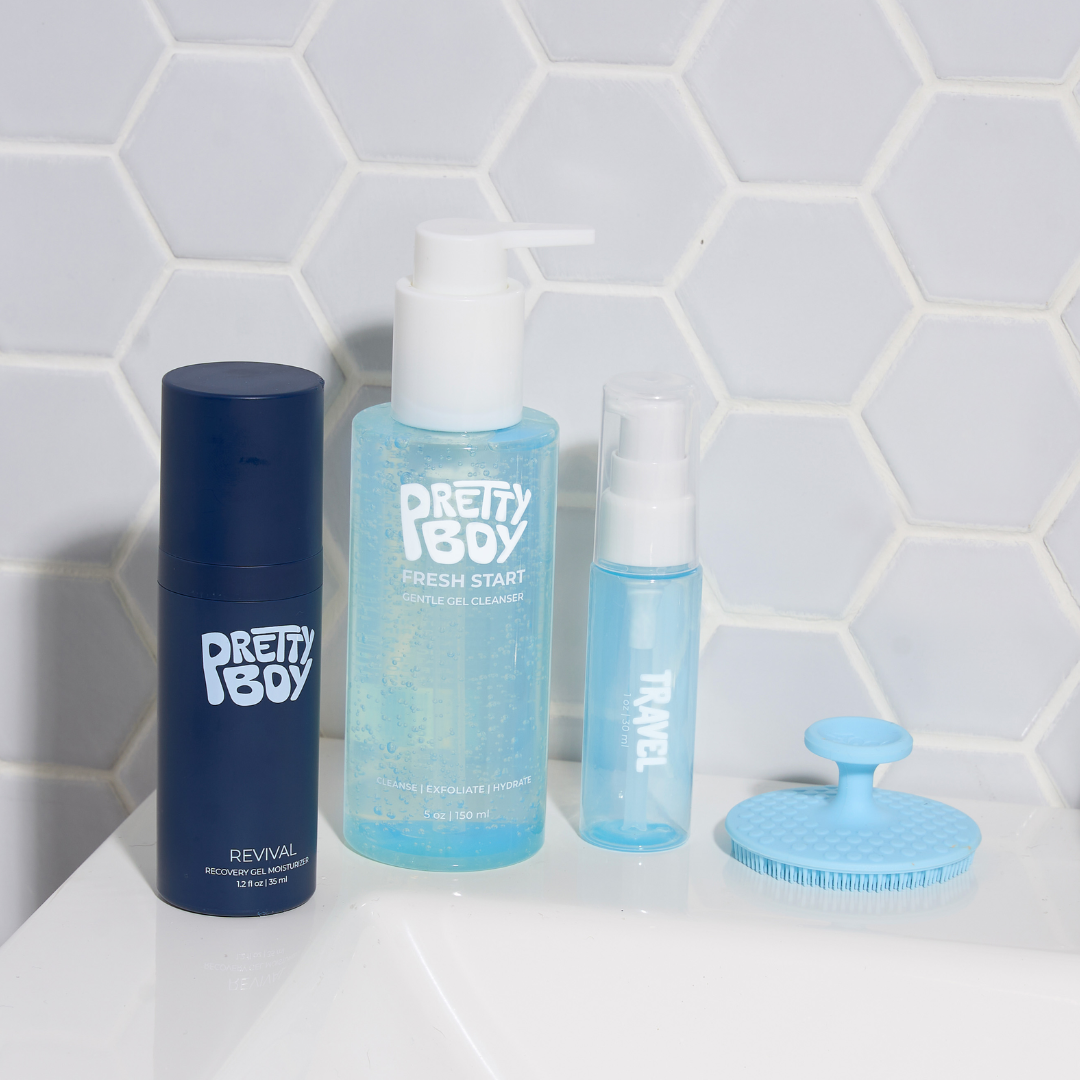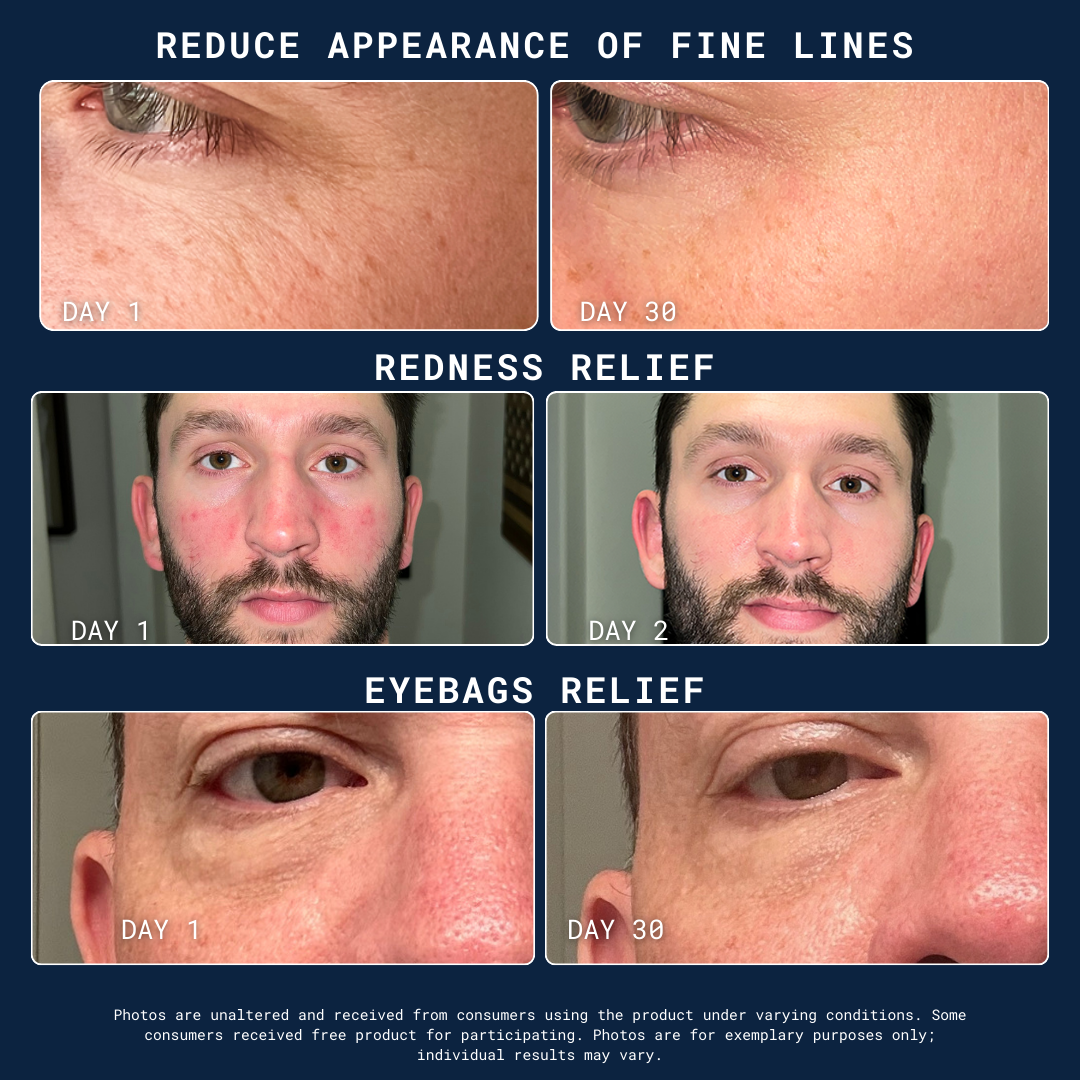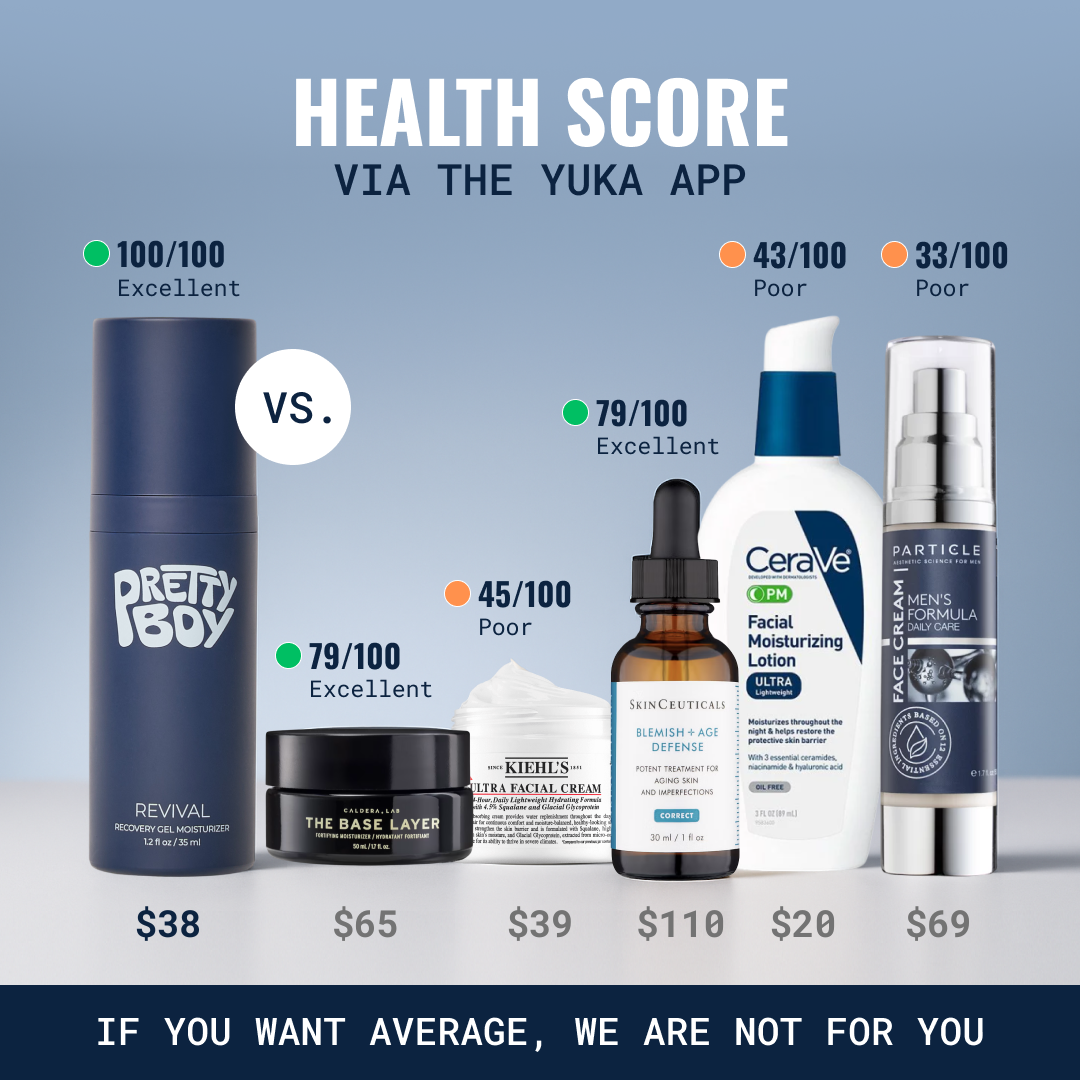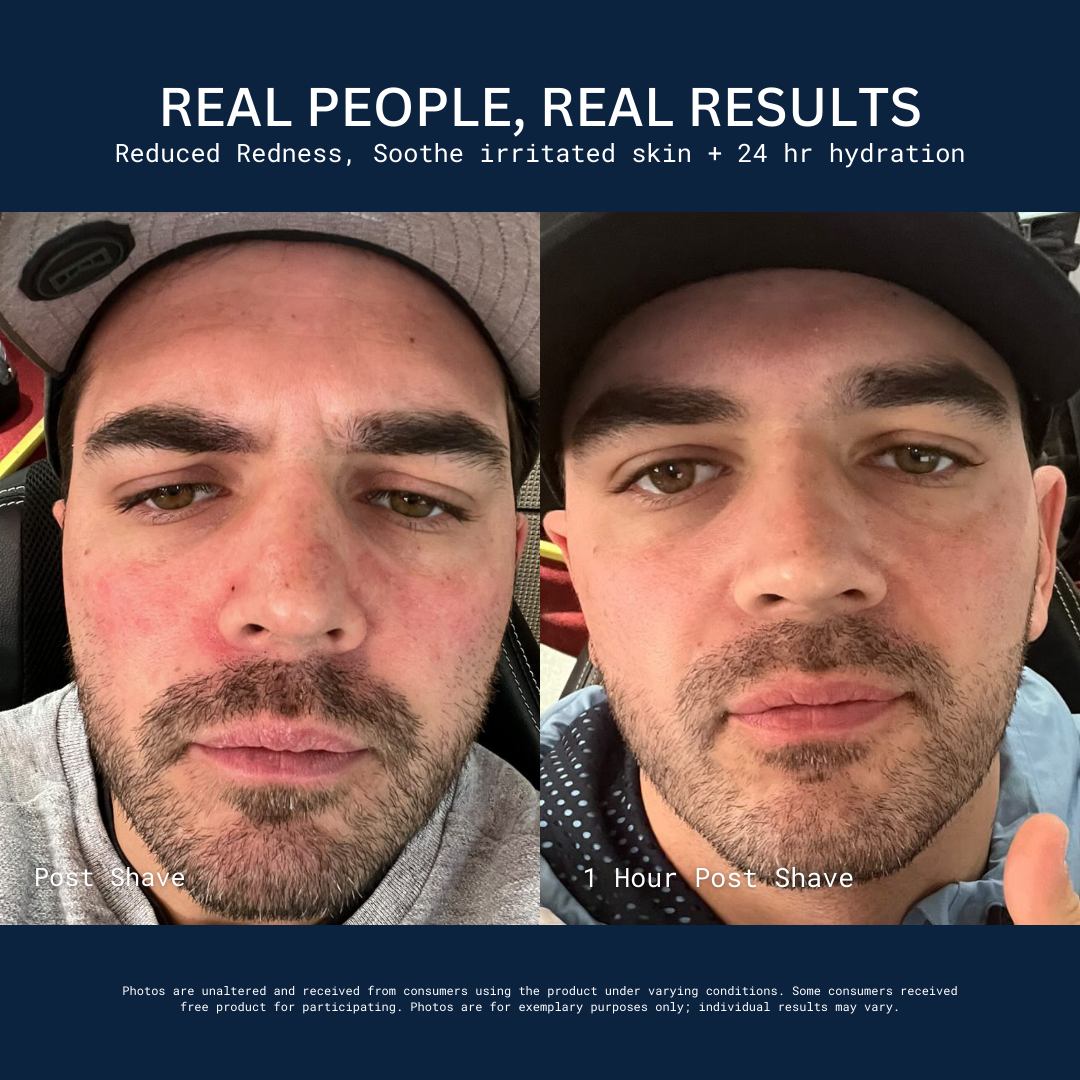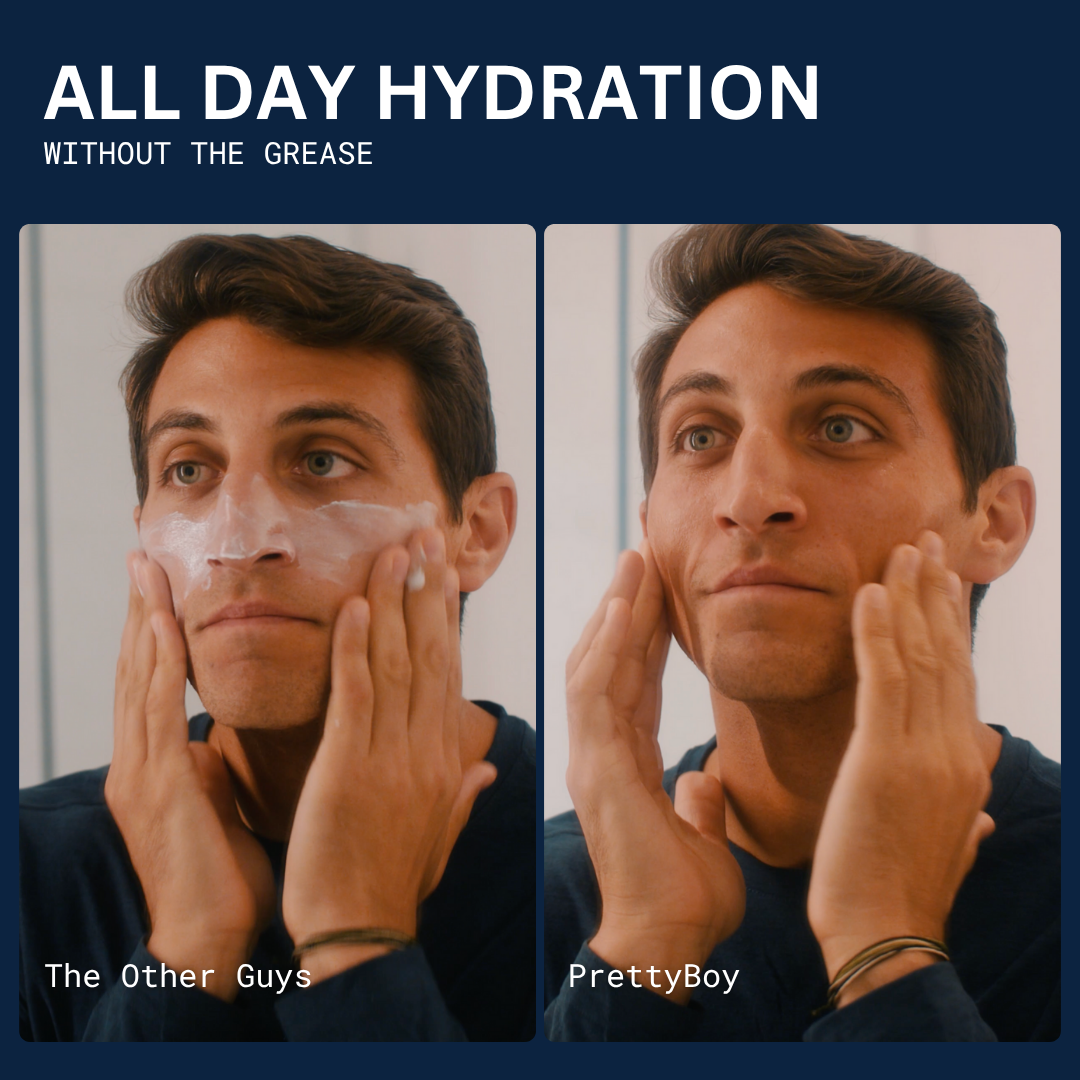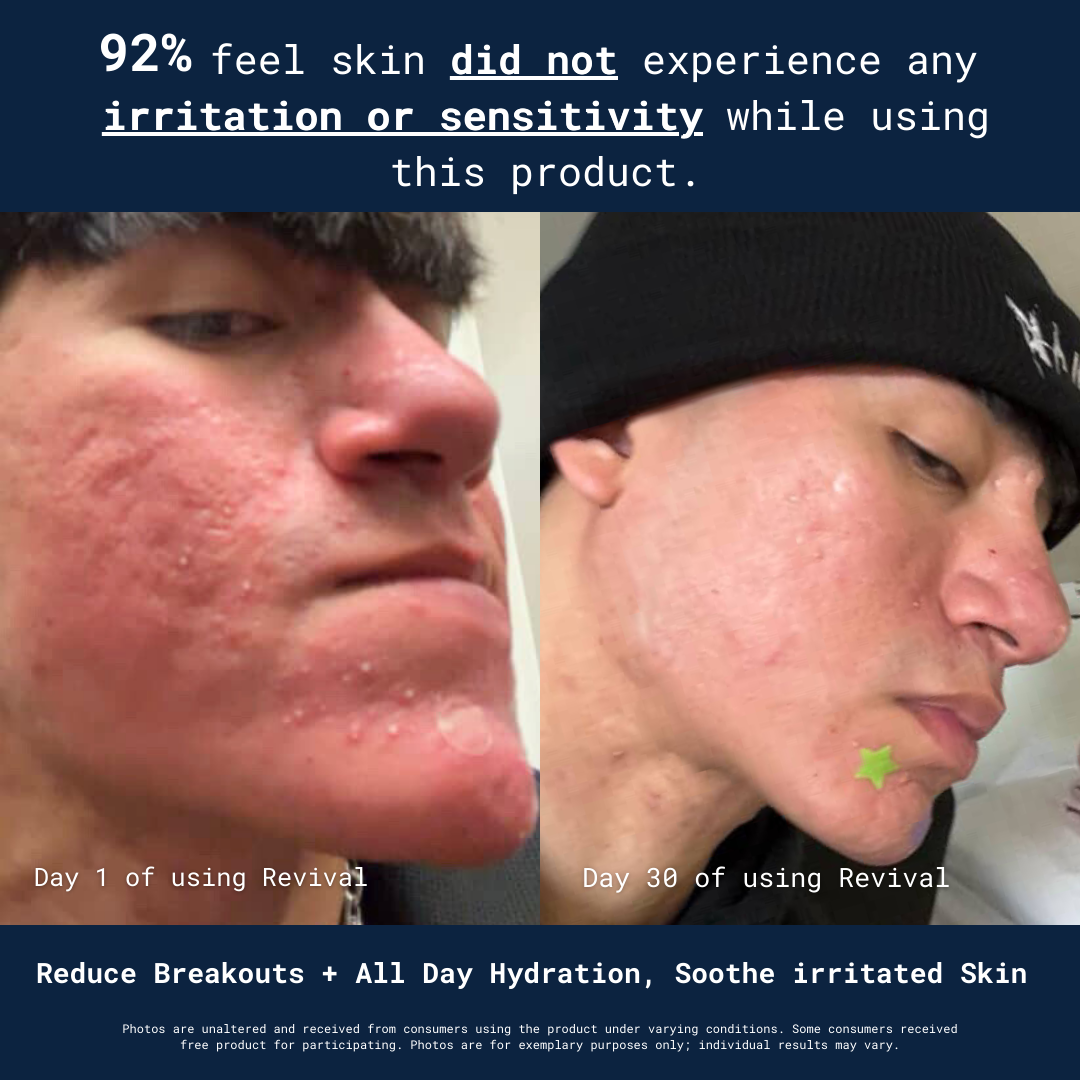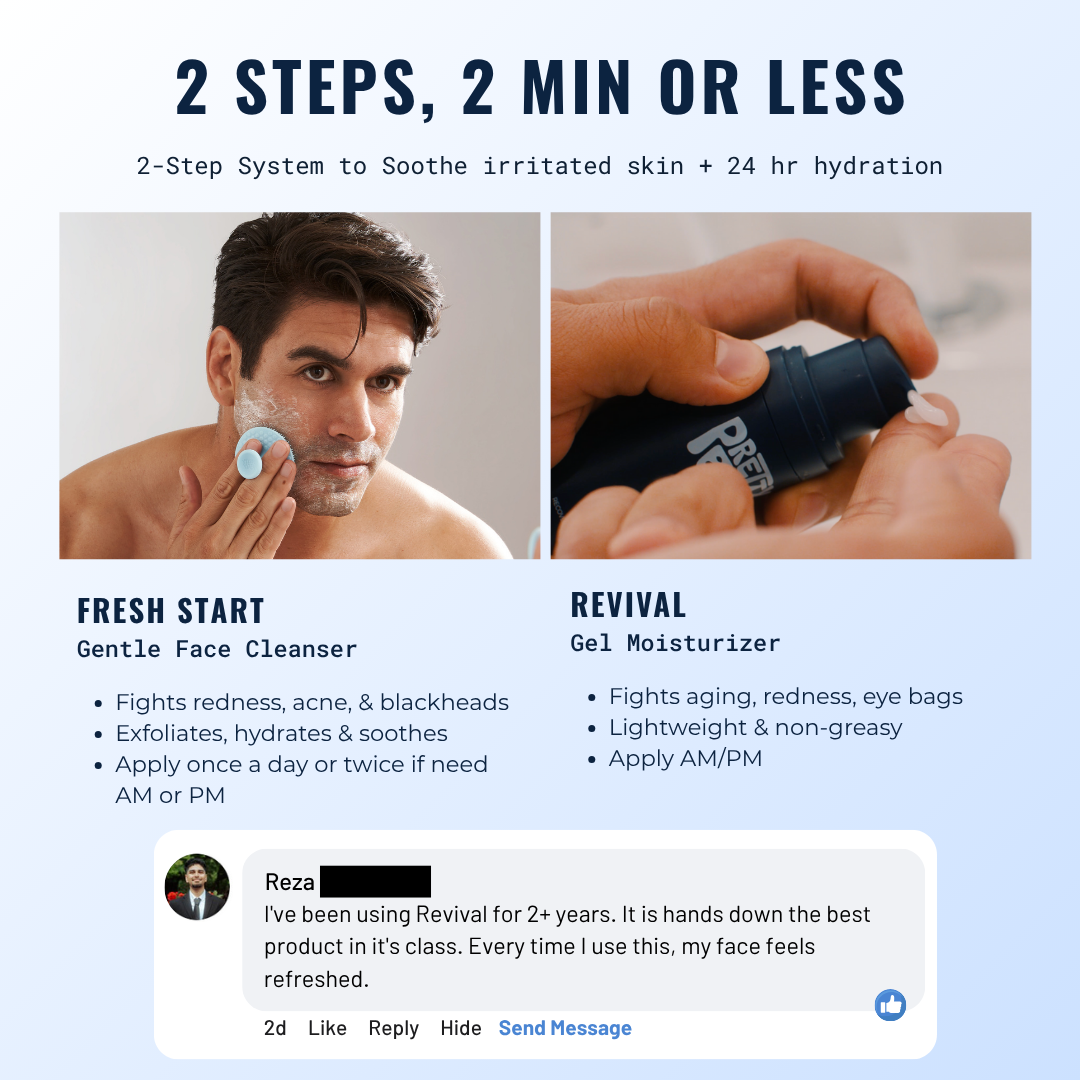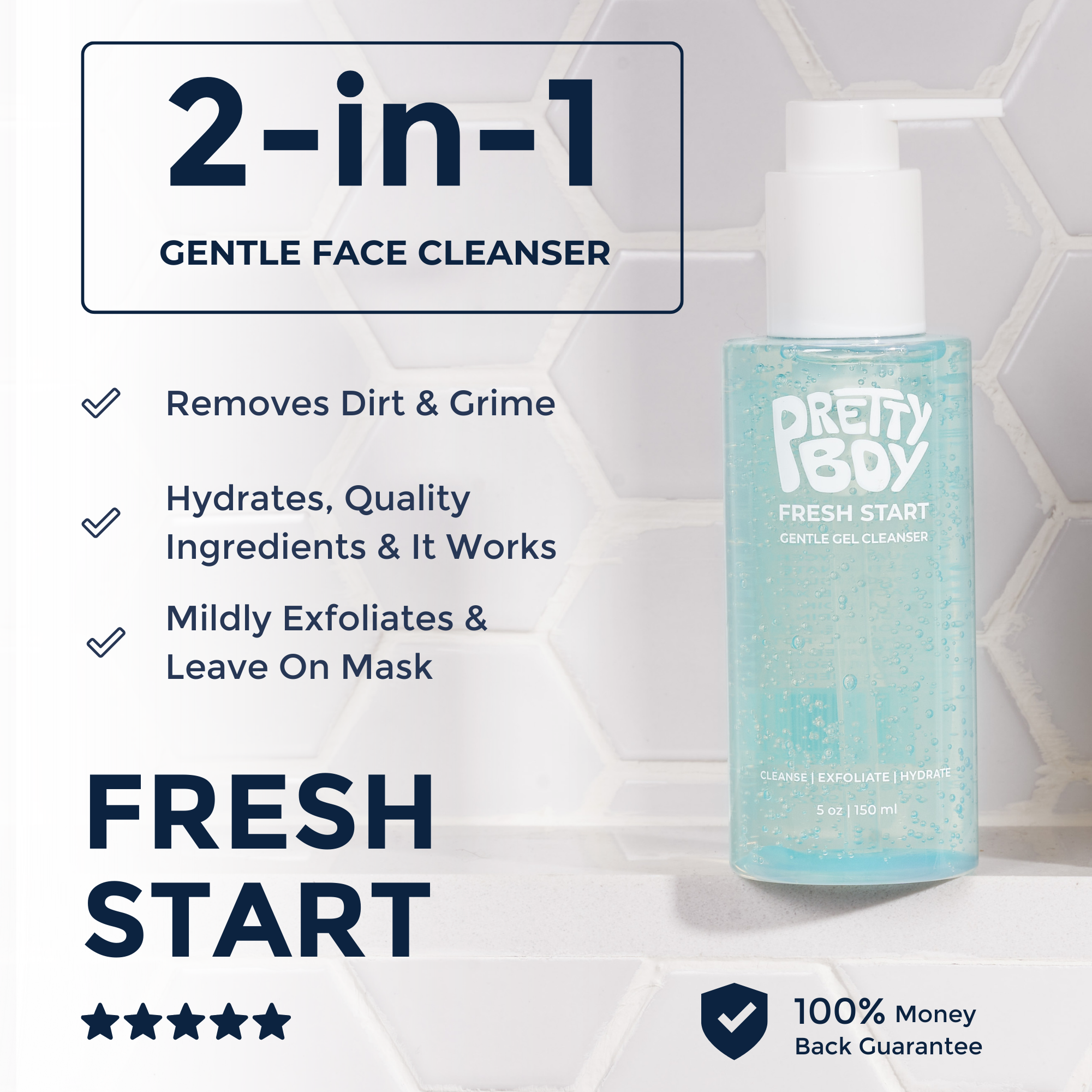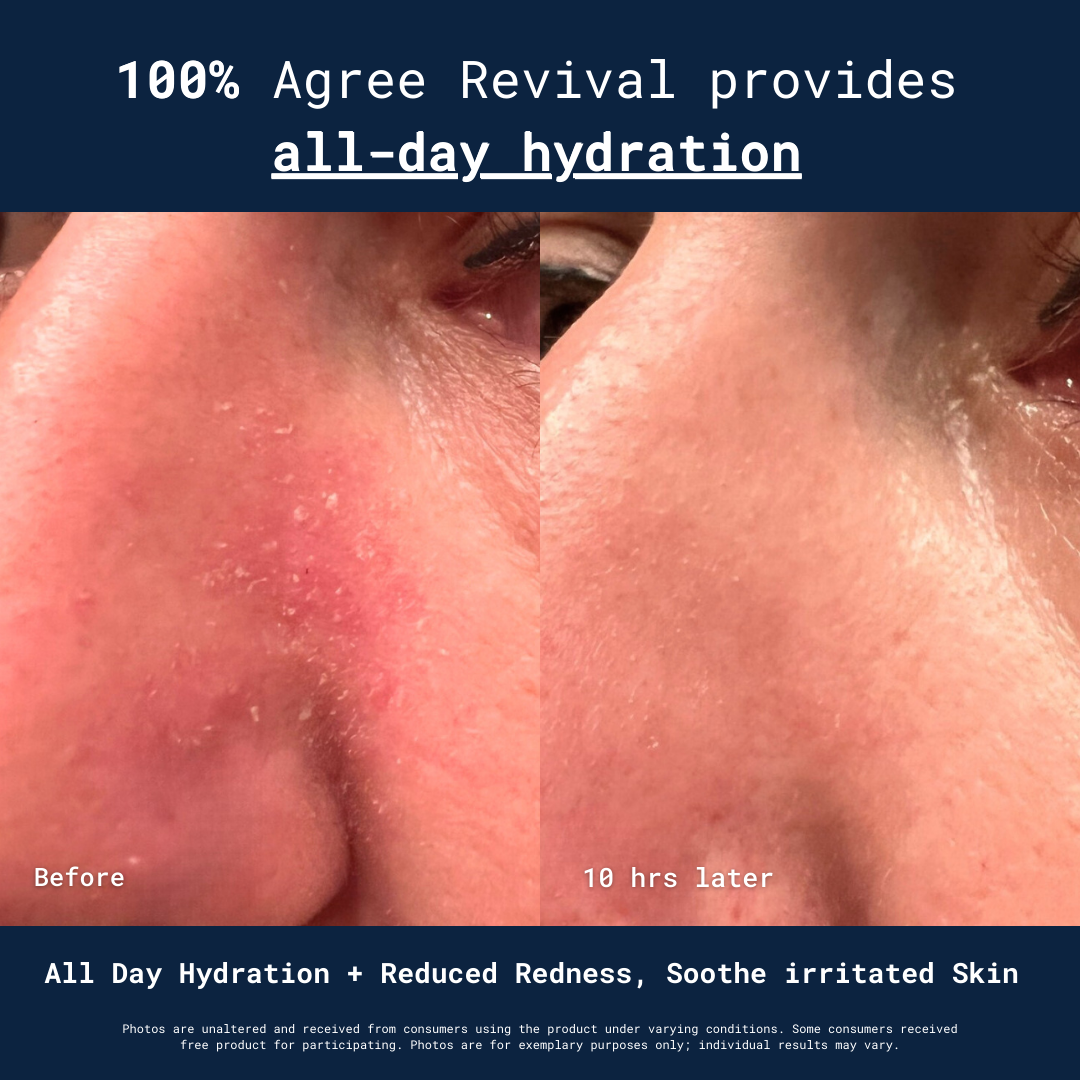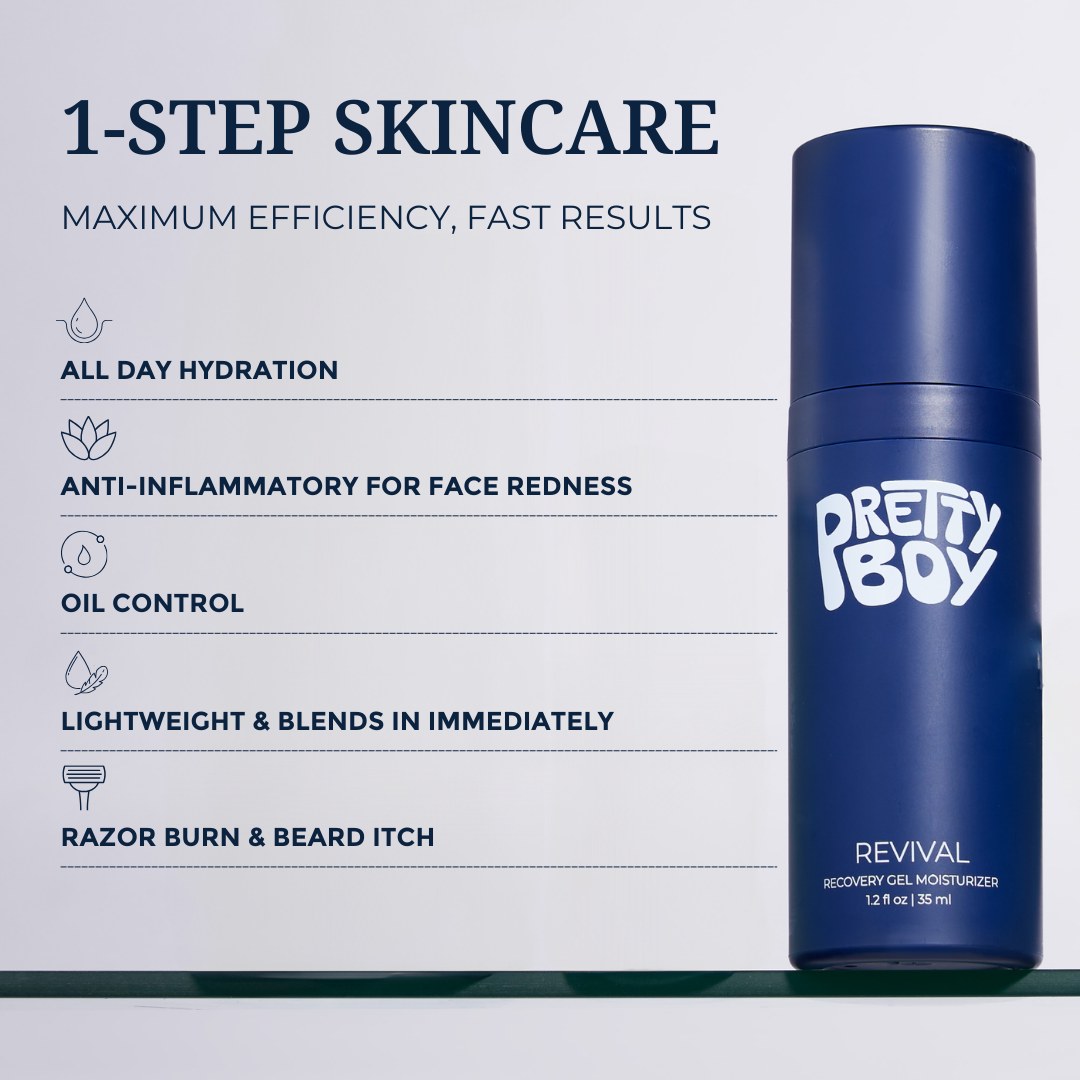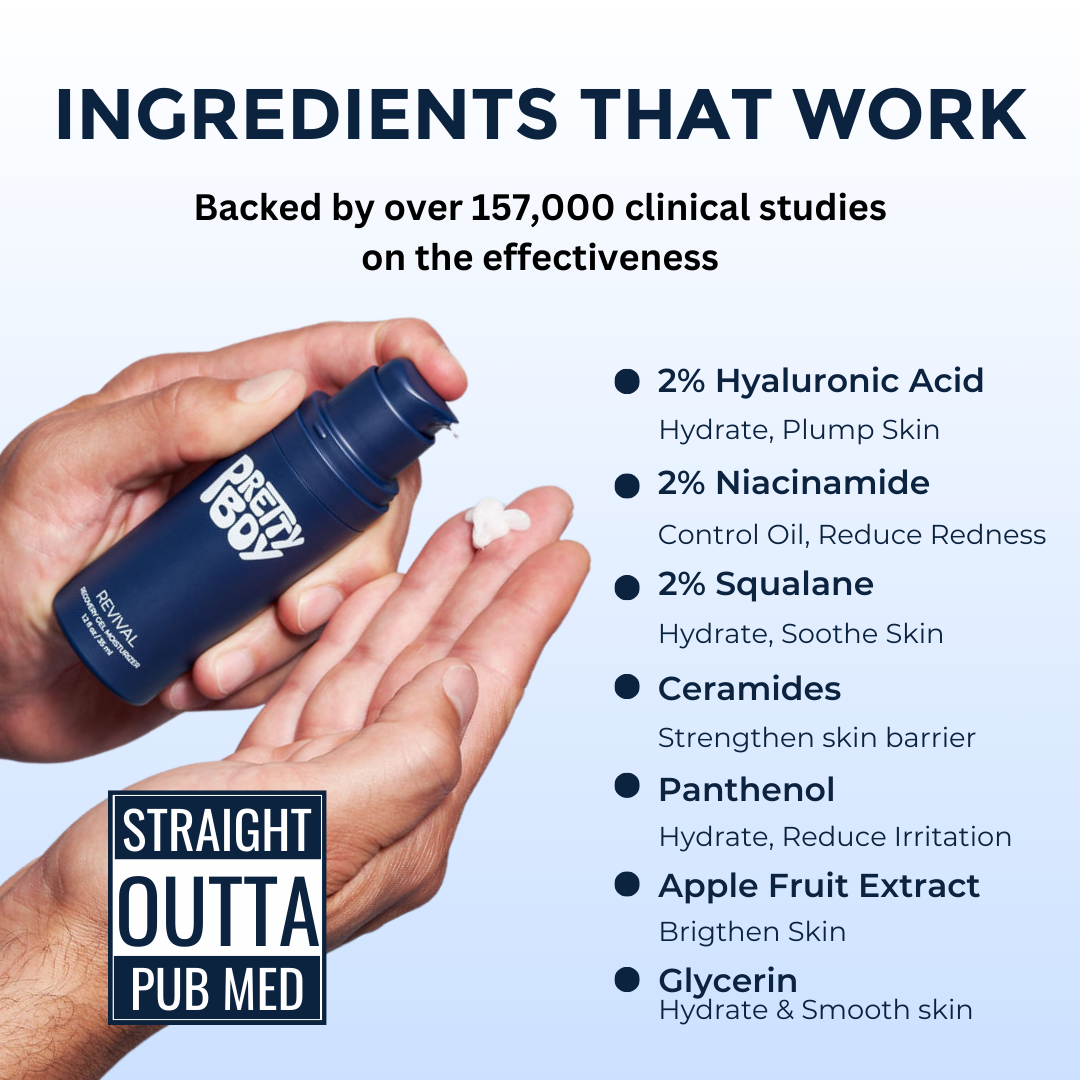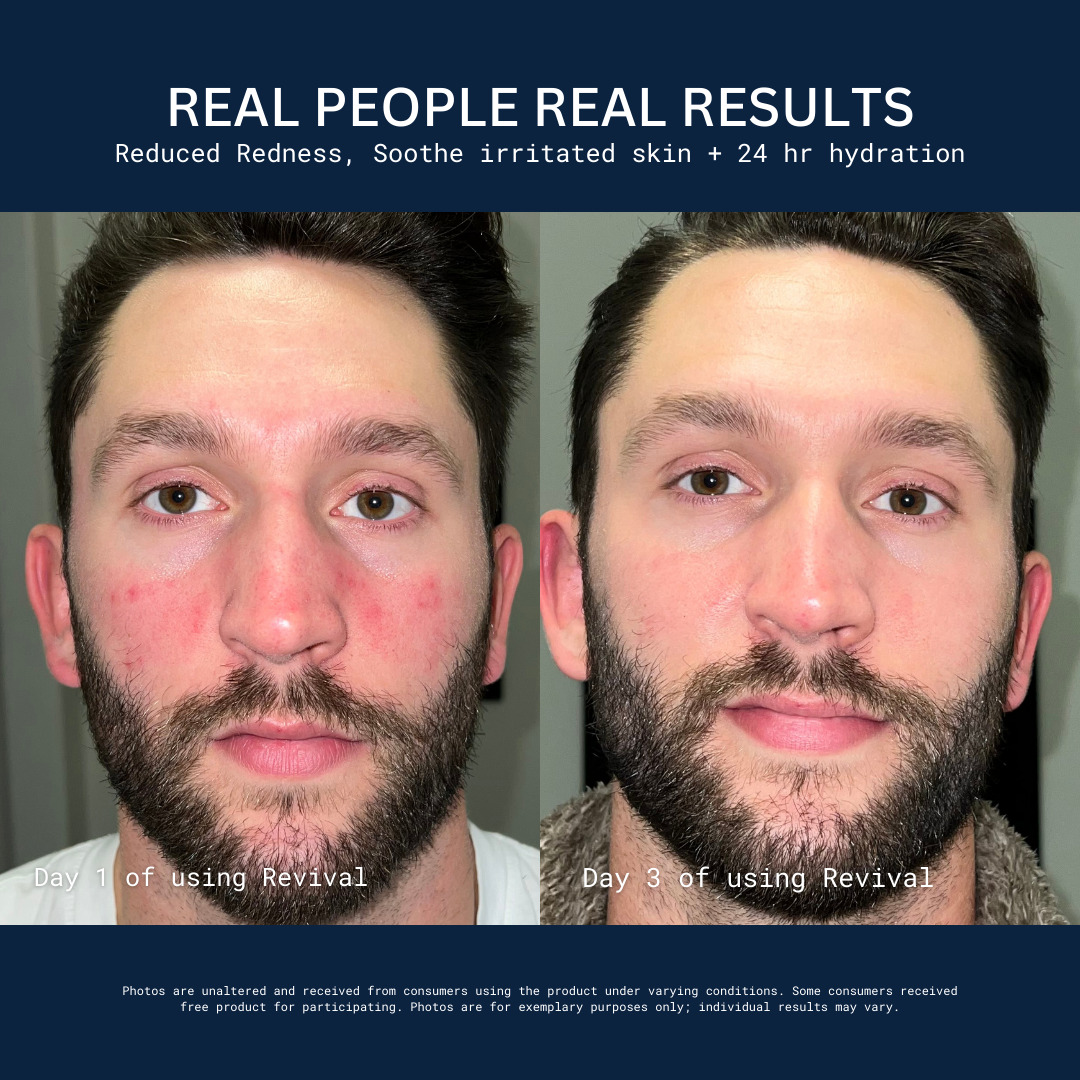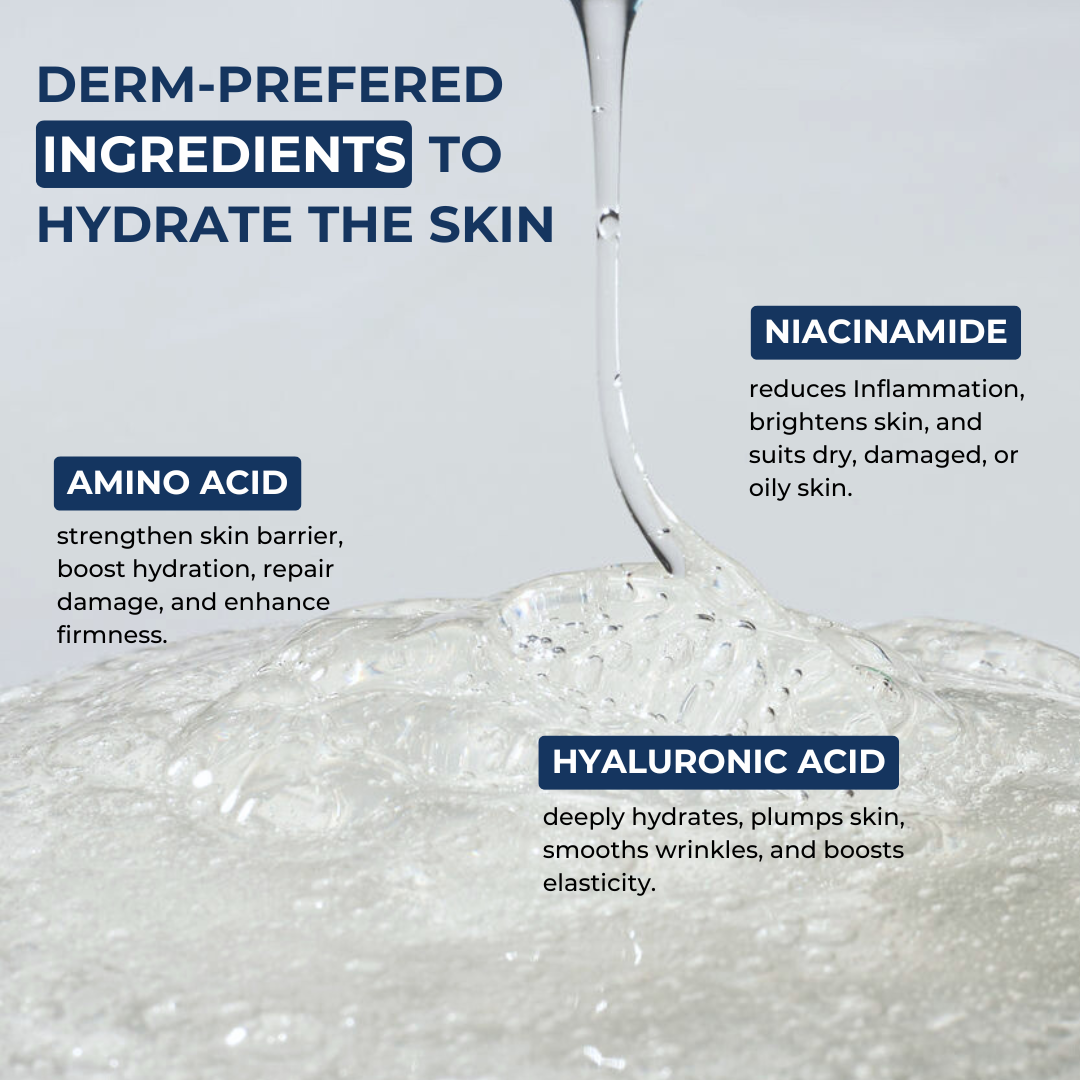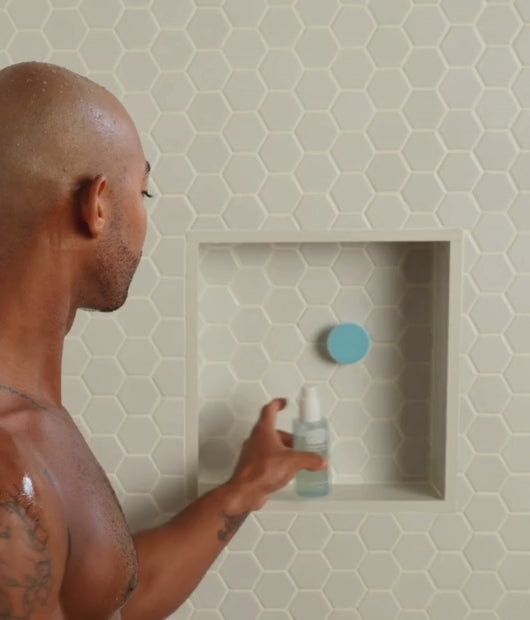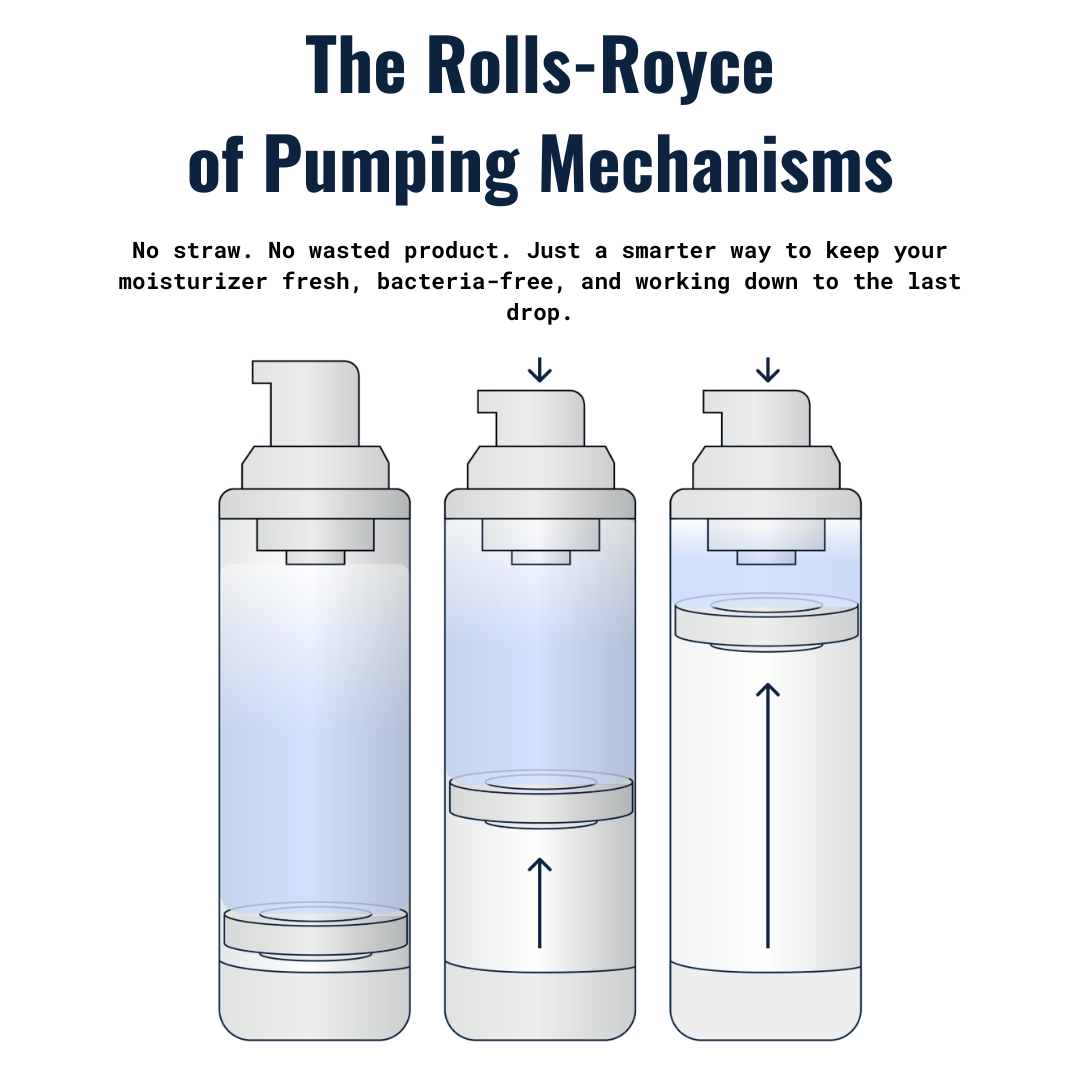Niacinamide alleviates rosacea symptoms like facial redness by improving your skin barrier function and reducing inflammation. Using a moisturizer with niacinamide can improve rosacea symptoms in as little as 2 weeks.
If you go down the rabbit hole of rosacea hacks, you’ll see people talking about oatmeal face masks, red light therapy, and sketchy supplements. But one of the most researched (and most effective) treatments for rosacea is a molecule called niacinamide.
You were probably snoozing during your high school chemistry class, so we’ll keep this simple: Niacinamide is a water-soluble version of vitamin B3 (AKA niacin). For decades, dermatologists have recommended niacinamide to fix acne (Opens in a new window) (Opens in a new window), fine lines (Opens in a new window) (Opens in a new window), and hyperpigmentation. But it may have the most potential for rosacea-prone skin.
In this article, we’ll explain the benefits of niacinamide for rosacea, how to incorporate it into your skincare routine (Opens in a new window) (Opens in a new window), and when you can expect to see results (Opens in a new window) (Opens in a new window).
Is Niacinamide Good For Rosacea?
Niacinamide should be a staple in your skincare routine (Opens in a new window) (Opens in a new window), especially if you struggle with rosacea flare-ups.
Multiple clinical studies have shown that topical niacinamide improves rosacea symptoms including facial redness, dryness, and flakiness in as little as 2-4 weeks. By stimulating the production of ceramides and inhibiting inflammation, niacinamide soothes the skin and helps you maintain an even complexion.
One study in (Opens in a new window) (Opens in a new window) Clinical and Experimental Dermatology had rosacea patients use a niacinamide gel moisturizer (Opens in a new window) (Opens in a new window) twice daily for 4 weeks. By the end of the trial, 76% of the patients reduced their symptoms. Another randomized clinical trial found (Opens in a new window) (Opens in a new window) that using a niacinamide moisturizer twice daily significantly reduced redness, blemishes, and dryness after 4 weeks.
So, how exactly is niacinamide delivering these epic results? Let’s take a closer look at two factors:
Inflammation Reduction
Rosacea dilates the blood vessels in your skin, which leads to redness and a blotchy look. Niacinamide reverses that effect by inhibiting inflammatory pathways and slowing the release of inflammatory substances that contribute to redness. Niacinamide also helps your skin stay hydrated, making it less prone to irritation and redness.
These effects create a one-two punch that soothes your skin and gives you a more even complexion.
Ceramide Production
Ceramides are fats (AKA lipids) that make up 30-40% of your outer skin layer. They protect your skin from irritants, infections, and excessive dryness. Rosacea can throw your ceramide levels out of whack, leading to dry, itchy, flaky skin—but that’s where niacinamide comes in.
Niacinamide kickstarts the synthesis of precursor molecules like sphingosine and sphinganine. By enhancing these building blocks, niacinamide helps stimulate ceramide production (Opens in a new window) (Opens in a new window), which strengthens your skin barrier, prevents water loss, and protects against irritants.
How to Use Niacinamide for Rosacea
The most effective way to use niacinamide for rosacea is to use a gel-based moisturizer (Opens in a new window) (Opens in a new window) with at least 2% niacinamide and apply it twice daily: once in the morning and again before bed. For optimal results, you should apply topical niacinamide to clean, dry skin.
Don’t use a moisturizer (Opens in a new window) (Opens in a new window) that’s thick and greasy—the last thing you want is acne on top of your rosacea. Do your face a favor and use Revival (Opens in a new window) (Opens in a new window) (Opens in a new window) (Opens in a new window) (Opens in a new window) (Opens in a new window) (Opens in a new window) (Opens in a new window): a gel-based moisturizer that has a derm-approved formula with niacinamide, ceramides, and hyaluronic acid (Opens in a new window) (Opens in a new window) for instant relief from redness (Opens in a new window) (Opens in a new window).
It’s like an ice-cold Gatorade after a hangover…but for your face.
How Long Does It Take for Niacinamide to Treat Rosacea?
Most of the current research on niacinamide shows that it improves rosacea symptoms within 2-4 weeks of consistent use—typically twice daily. But that’s not to say you can’t get immediate relief from facial redness and dryness after applying niacinamide. Rosacea is a tricky skin condition, so how fast you get relief depends on factors like genetics, your environment, and your skin type.
Pro tip: Check out our guide to the ultimate rosacea skin care routine (Opens in a new window) (Opens in a new window).
What Are the Potential Side Effects of Niacinamide?
Niacinamide is an essential vitamin that your body needs. Accordingly, it’s safe for most people with sensitive skin and shouldn’t cause adverse side effects. The potential problem, however, lies in the ingredients that get added to niacinamide products.
Skincare products are often loaded with fragrances, acids, plant extracts, and parabens (a common preservative)--all of which have the potential to create more problems than they solve.
We know you’re not in school anymore, but you gotta do your homework when shopping around for skincare products. When it comes to your moisturizer, opt for a fragrance-free, paraben-free formula like Revival, which is designed for fellas with sensitive skin.
When you’re a PrettyBoy, you spend less time worrying about weird side effects and more time rockin’ out, crushing life, and being a dude.
Niacinamide vs. Azelaic Acid: Which Is Better for Rosacea?
Azelaic acid is another powerhouse ingredient that dermatologists recommend for rosacea, due to its anti-inflammatory properties. One study found (Opens in a new window) (Opens in a new window)that topical azelaic acid significantly reduced rosacea symptoms after 15 weeks of use.
So, how does this stuff stack up to niacinamide?
Both ingredients are naturally occurring compounds that calm sensitive skin. They’re also both relatively gentle, making them ideal for people with sensitive skin. The main difference is that azelaic acid targets different inflammatory mediators in your skin cells. Azelaic acid is also a gentle exfoliant that promotes the turnover of new, healthy skin cells.
You can definitely use niacinamide and azelaic acid together. In fact, plenty of dermatologists recommend them as a dynamic duo to treat rosacea. These two ingredients have complementary effects that reduce redness and relieve dryness without any harsh side effects.
Get the Goods to Reduce Redness
We couldn’t find a cure for rosacea (yet) so the next best thing was making a kick-ass moisturizer that’s packed with clinically-proven ingredients to tame red, dry, flaky skin. That’s where Revival comes in.
We spent years with dermatologists to dial in our formula, and we’ve got the receipts to back it up. In a blind review of ingredient lists, Revival received almost twice as many first-place votes as big-name brands.
Just because a product is on supermarket shelves doesn’t mean it’s “good.” When in doubt, talk to your doc about the stuff you put on your face. Chances are he’ll tell you to rock with Revival , opens in a new tab too…




